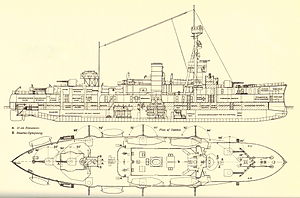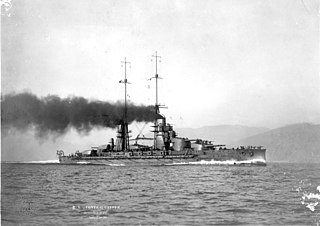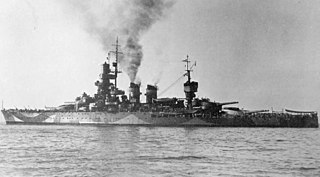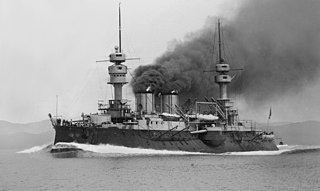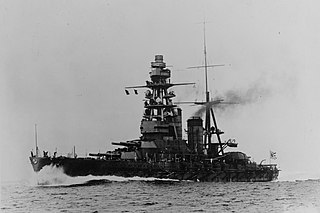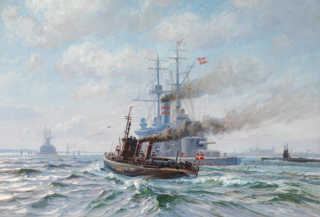 Niels Juel circa 1938 | |
| History | |
|---|---|
| Name | Niels Juel |
| Namesake | Niels Juel |
| Builder | Orlogsværftet, Copenhagen |
| Laid down | 21 September 1914 |
| Launched | 3 July 1918 |
| Commissioned | 23 May 1923 |
| Stricken | 29 August 1943 |
| Captured | 29 August 1943 |
| Fate | Ran aground, 29 August 1943 |
| | |
| Name | Niels Juel |
| Acquired | Refloated, October 1943 |
| Renamed | Nordland |
| Stricken | 3 May 1945 |
| Fate | Sold for scrap, 1952 |
| General characteristics | |
| Type | Coastal defence ship |
| Displacement | 3,800 long tons (3,861 t) (standard) |
| Length | 90 m (295 ft 3 in) |
| Beam | 16.3 m (53 ft 6 in) |
| Draught | 5 m (16 ft 5 in) |
| Installed power |
|
| Propulsion | 2 shafts; 2 triple-expansion steam engines |
| Speed | 14.5 knots (26.9 km/h; 16.7 mph) |
| Range | 6,000 nmi (11,000 km; 6,900 mi) at 9 knots (17 km/h; 10 mph) |
| Complement | 310–369 |
| Armament |
|
| Armor |
|
HDMS [Note 1] Niels Juel was a training ship built for the Royal Danish Navy between 1914 and 1923. Originally designed before World War I as a monitor, construction was slowed by the war and she was redesigned as a training cruiser. Completed in 1923 she made training cruises to the Black and Mediterranean Seas, South America and numerous shorter visits to ports in northern Europe. The ship often served as a flagship and occasionally was used as a royal yacht for visits to overseas possessions and other countries.
Contents
- Background
- Description
- Armament and fire control
- Protection
- Modifications and modernization
- Construction and career
- Operation Safari
- 1944 to 1952
- Notes
- Citations
- Bibliography
Niels Juel was extensively modernized in the mid-1930s and remained operational after Nazi Germany occupied Denmark in 1940. When the Germans attempted to seize the Danish Fleet in August 1943, the ship attempted to escape to Sweden, but was attacked and damaged by German bombers. She was deliberately run aground by her crew to deny the ship to the Germans, but Niels Juel was not badly damaged. The ship was refloated several months later and repaired by the Germans. They renamed her Nordland and used her as a training ship. She was scuttled by them in May 1945 and her wreck was salvaged in 1952.
